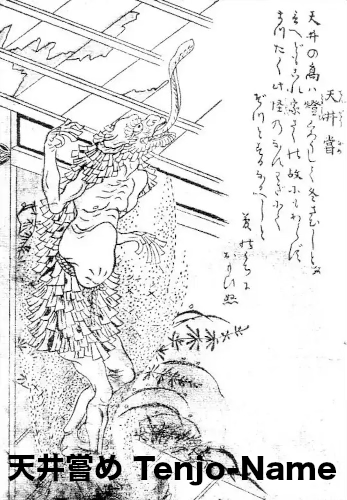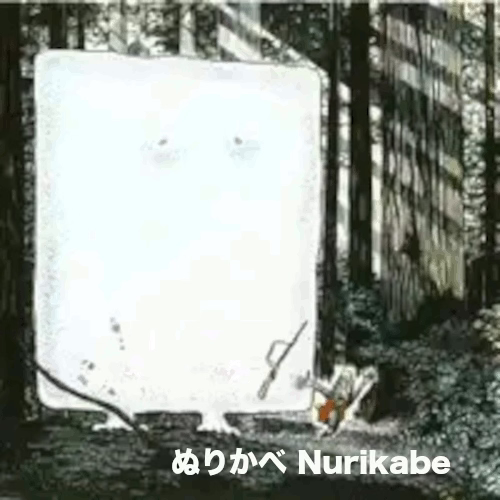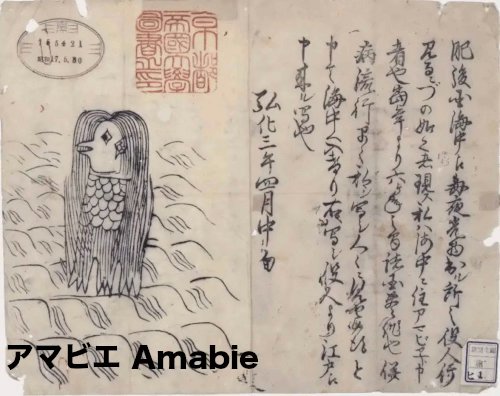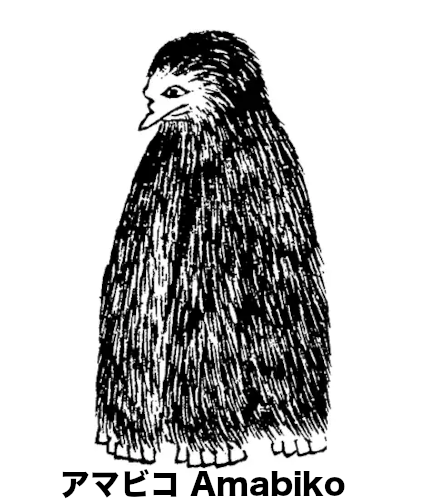Yokai. Please note that this text contains many personal opinions about yokai, so keep in mind that there are various interpretations.
Whether they exist or not, such a matter is no longer of importance. The issue lies in the fact that we are perplexed simply because we cannot understand the reason why there were many who strongly believed in ghosts in the past, and why even now there are still some who do
柳田國男『新訂 妖怪談義』小松和彦校注、KADOKAWA(角川ソフィア文庫)、2017 年、17 頁。
I believe the relationship between yokai and modern people lies in this quote by Kunio Yanagita.
In the past, they were close to people’s lives, and many believed in them. However, in modern times, only a few people believe in yokai.
Yet, the inability to understand why those few people still believe in them seems to remain unchanged even today.
About ‘Yokai’
Yokai are supernatural entities in Japan. As there is no direct equivalent noun in English. I will use the term ‘Yokai’ consistently there.
They have appearance that are different from humans. Some ones have horns, others have red faces with long nose or are shaped like blooms.
There are all sorts of them with various appearances.
Different from Creatures and Yokai
Other countries also have various mythical creatures. For example, creatures like ogres, trolls, and giants are similar to the Japanese Yokai known as Oni, however, in Japanese customs, Oni are often objects of worship.
In this regard, they have a different nature from the aforementioned ogres and other similar creatures.
Keep in mind that, in terms of being objects of worship, they differ from monsters. Please.
Yokai and Modern Japanese People
My Grandmother’s Tale
In my childhood, every summer I used to return to my father’s family home. The house was an old wooden one.
I looked up at the ceiling, there were black stains scattered here and there. I found it fascinating and stared at it intently, my grandmother would always start telling a ‘Yokai’ story.
“It’s the marks left by ‘Tenjou-name’.”

‘Tenjou-name’ is a kind of them. It scrapes an unclean ceiling.(‘Tenjou’ means ceiling, and ‘Name’ means scraping in Japanese. Tenjou-name means a Ceiling Scraper.)
They Gave Me An Encyclopedia
I found the story both scary and interesting. One summer, my grandparents gave me a Yokai encyclopedia by Mizuki Shigeru as a surprise.
There was a world of things I had never seen or heard of before. The author of Yokai encyclopedia Mizuki Shigeru explains the world of Yokai, easily and theoretically.
The Movie of Yokai Get the Animation Award at the Japanese Academy Awards
And this is a story from several decades later. Now, once again, They have been revived in the hearts of the Japanese people.
The film ‘Kitaro’s Birth: The Mystery of GeGeGe’ will be released on November 17, 2023.(The Yokai known as ‘GeGeGe no Kitaro’ was created by Mizuki Shigeru).
It became an animation film with 1.47 million attendees and over 2 billion yen in box office revenue. It also won the Animation Award at the Japanese Academy Awards.
For Japanese people, Yokai are a very familiar entity, and this has not changed in modern Japan.
Encounter with Yokai?
In the Case of Mizuki Shigeru
As mentioned earlier, Shigeru Mizuki became interested in yokai after hearing stories from Nonnonba, when he was a child. Additionally, Mizuki had an encounter with a yokai during the latter part of World War II.
Mizuki was assigned to the southern front, where defeat seemed imminent. While fleeing from enemy soldiers, he suddenly found himself unable to move forward in the dense jungle.
It felt as though there was an invisible wall in front of him. After taking a short rest, he was able to continue on his way.
Looking back on this experience, Mizuki reflected, “I wonder if that was a Nurikabe.”

In the Case of Yanagida Kunio
Kunio Yanagita, who studied Japanese folklore, customs, and yokai, and laid the foundation for Japanese folkloristics, also researched yokai from the perspectives of cultural anthropology and comparative mythology. He published works such as Tono Monogatari (The Tales of Tono).
In his work Yokai Dangi (Talks on Yokai), Yanagita also provides a description of the Nurikabe.
It is said that on the coast of the Chikuzen, in the Onga district, when walking along the road at night, there are times when suddenly the way ahead becomes a wall, and you cannot go anywhere. This is called “Nurikabe” and is feared. If you take a stick and sweep it along the ground, it disappears, but nothing happens if you strike it from above.
柳田國男『新訂 妖怪談義』KADOKAWA(角川ソフィア文庫)、2017年。
Indeed, the existence of the Nurikabe may have been real at one point. However, such stories are rarely heard in modern times. It seems that one might only encounter a Nurikabe by walking.
Even with just the Nurikabe, it is unclear what exactly a yokai is. Yokai may be inherently elusive and difficult to grasp.
Definition of Yokai
All yokai possess supernatural powers that cannot be explained by human science. Some post-war researchers even say that “yokai are gods who have lost their faith.”
If they are gods, it would not be surprising that they possess supernatural powers.
I would define yokai as supernatural beings that are believed to have an inexplicable influence on nature and people’s lives.
How Yokai were Created.
Indeed, not all yokai are malevolent. There are quite a number of yokai that, when properly revered, offer blessings in return.
Many of these yokai are enshrined as deities in Japan’s major religions, such as Shinto and Buddhism.
Shinto has a very primitive aspect to it. I might be reprimanded by Shinto scholars for saying so, but it remains a fact that it is, in essence, an ancient religion.
Even within this ancient religion, there were land gods, or ubusuna-no-kami, who were venerated as deities of the land.
These gods were primarily worshipped as protectors of specific regions or as the gods of the land where an individual was born.
In ancient Japan, deities closely tied to the local life and nature were worshipped by each village, and this connection between the land and its deities played a central role in the religious practices of local communities.
There are various theories about why some of these ubusuna-no-kami transformed into yokai. I would like to explore a few of these theories.
In Japanese Changes in Belief Due to Imported Religions
In the 6th century, new beliefs, especially Buddhism, were introduced from abroad and spread as a state policy. Some ubusuna-no-kami(local gods) were merged through the process of shinbutsu-shugo (the syncretism of Shinto and Buddhism).
Among these, there are cases where ubusuna-no-kami were reinterpreted as Buddhist protectors, or even absorbed into the roles of Buddhas and Bodhisattvas.
However, as Buddhism became more dominant, some ubusuna-no-kami lost their status. There were regions where the faith in these local gods faded.
This change may have led to the transformation of some ubusuna-no-kami into yokai, as their worship diminished and they became legends passed down through the generations.
It seems that the spread of Buddhism as a state policy was the main cause of some ubusuna-no-kami losing their faith and transforming into yokai.
Transformation of Human Society
Yokai have existed for a long time. However, as time progressed, lifestyles and values changed, making it harder for the influence of indigenous gods to impact people’s culture.
As a result, these indigenous gods were no longer worshipped and began to be dismissed as superstitions. Consequently, it is likely that these gods came to be recognized as yokai.
Overemphasis on the Negative Aspects of Local Gods
Indigenous gods, in most cases, held both benevolent and malevolent powers. When disasters or misfortunes occurred, they were often linked to the anger of these gods.
As repeated disasters and epidemics continued to torment people’s lives, the divine status of these gods began to be questioned. People started to view these gods as “evil beings.”
When this shift happened, deities that were originally protectors or nature gods could lose their divine status and be transformed into malevolent yokai that bring about calamity.
• Changes in the perception of ubusuna no kami due to the arrival of new religions.
• Changes in the belief in indigenous gods due to the passage of time
• The transformation of indigenous gods into malevolent beings due to the dominance of their negative aspects
Could this be the background behind the creation of yokai?
妖(Yo)and怪(Kai) 妖怪(Yokai)
While we summarize it with the single word ‘Yokai,’ ‘Yokai’ is actually a compound word. Originally, it was divided into ‘妖’ (ayakashi) and ‘怪’ (kai or ke).
It seems that during the Heian and Nara periods, there was a distinction made between these two terms. However, by the Edo period, these two concepts seem to have been integrated into the single term ‘Yokai.’
So, what constitutes ‘妖(ayakashi)’ and what constitutes ‘怪(kai)’? What differences there might have been between them.
About 妖(ayakashi)
The term “妖Yo” originates from the word “妖しいayashii,” which means “something mysterious or unclear.” It refers to strange or supernatural things that are beyond normal understanding.
“妖しいayashii” refers to a concept applied to things that originate from a world different from the human realm, often invisible or mysterious. It encompasses inexplicable events and mystical entities that can even become objects of belief or worship.
In essence, “妖(ayakashi)” includes phenomena and beings that are shrouded in mystery and cannot be easily explained.
Natural Phenomena and Diseases Were Seen as Ayakashi
In old times, phenomena such as wind and thunder were also thought to be influenced by “妖(ayakashi)”entities.
People during the Heian and Nara periods also perceived “妖(ayakashi)” entities in phenomena like wind and thunder.
“妖(ayakashi) ” was an abstract concept, often used to describe things that were elusive and lacked a definite form or shape. As a result, it frequently became an object of fear or reverence.
Later on, the concept of “妖(ayakashi) ” evolved into more concrete forms, such as the “妖狐yohko” (evil fox). Rather than remaining abstract, it transformed into specific, mysterious beings that took on the appearance of humans or animals.
About 怪(kai or ke)
“怪(kai)” refers to strange objects or phenomena that defy common sense. Unlike “妖(ayakashi) ” which was initially abstract, “怪(kai)” was used from the beginning to describe specific entities. Examples include ghosts, the “百鬼夜行(Hyakki Yagyoh)” (night parade of a hundred Yokais), and monsters.
Ayakashi and Kai Cannot Separated into Two Distinct Categories.
However, “妖(ayakashi) ” and “怪(kai)” cannot be strictly divided into abstract and concrete categories.
For example, “怪異(kaii)” (strange occurrences) expands the interpretation of “怪(kai)” and refers to abstract phenomena or events. “怪異(kaii)” can denote any unusual or mysterious phenomena and is sometimes used to describe a wide range of strange occurrences.
When considering only the aspect of phenomena, “妖(ayakashi) ” and “怪(kai)” can seem quite similar. It is also true that “妖(ayakashi) ” often carries a sense of awe or reverence more than “怪(kai)” As a result, Yokai may not be a singular category but could have been divided into “妖(ayakashi) ” and “怪(kai)” based on sensory perceptions.
The “Yokai trend” of the Edo period
The concept of yokai seems to have solidified around the Edo period, during a time when figures like Toriyama Sekien made significant contributions to the popular image of yokai.
Toriyama Sekien is famous for creating illustrations of yokai and compiling them into yokai picture scrolls. His work likely played a key role in the development of yokai culture among the common people.
Even today, you can easily find works like Toriyama Sekien’s Zuga Hyakki Yagyo Zengashu (The Complete Picture Collection of the Hundred Demons Procession) by searching on platforms like Amazon.
The intellectual class of the time also actively studied the concepts of “yo” and “kai.” As a result, yokai emerged as a cultural phenomenon in its own right.
By combining the mystical aspects of “yo” and the strange phenomena associated with “kai,” yokai came to be recognized as a distinct category. It seems that it was in the Edo period that “yo” and “kai” were officially merged into the unified concept of yokai.
Ayakashi and Kai
Moreover, intellectuals of the time actively researched “妖(ayakashi) ” and “怪(kai)” As a result, Yokai became established as a distinct culture.
It seems that they emerged from the combination of the mystical aspects of “妖(ayakashi) ” and the strange phenomena associated with “怪(kai).” It appears that the formal merging of “妖(ayakashi) ” and “怪(kai)” into the unified concept of “妖怪(Yokai)” occurred during the Edo period.
The period of modernization and Westernization in Japan
What happened to Yokai as the Edo period ended and the Meiji era began. With the opening of Japan, they began to be studied from a Western perspective, meaning a scientific viewpoint.
Scientific investigation led to the interpretation of them as natural phenomena, which resulted in a reduction in the number of entities previously considered Yokai. On the other hand, they came to be seen by Westerners as a valuable aspect of Japanese culture.
Lafcadio Hearn
Lafcadio Hearn (known in Japan as Yakumo Koizumi) and Kunio Yanagida are also well-known for their research on Yokai.
In Lafcadio Hearn’s work Kwaidan, there are interesting examples of onomatopoeia. In English, the sound of geta (Japanese wooden sandals) was not easily expressible, so it was represented as “karakoro” in Lafcadio Hearn’s Kwaidan. I believe this choice reflects an emphasis on capturing the eerie atmosphere associated with Yokai.
Yokai as a field of study
Yanagida Yanagida’s work Tono Monogatari had a profound impact. His fieldwork helped local Yokai gain recognition. It seems that the concept of them increasingly gained value among intellectuals.
It’s interesting that, despite the influx of scientific thinking with Japan’s opening to the West, Yokai were not dismissed as unscientific but instead came to be re-recognized as subjects of research.
The Relationship Between Modern Japanese People and Yokai
Even in the Reiwa period, people continue to seek out Yokai. The COVID-19 pandemic, which spread globally around 2020, is still fresh in our memories. During this time, “Amabie,” which was believed to ward off epidemics, became significant among the Japanese people.

Expelling Evil Spirits of Disease
Amabie was originally only sighted once. The first and last sighting occurred in the sea of Higo Province, which is now Kumamoto Prefecture.
During this sighting, Amabie delivered a prophecy to the officials:
“There will be good harvests for the next six years, but after that, an epidemic will spread. If you draw my likeness and show it to people, they will be able to avoid the epidemic.”
The officials quickly copied the appearance of Amabie.
Prophecy of Amabie
Following the prophecy, during the COVID-19 pandemic, not only illustrations of Amabie but also various goods featuring the it was released. I also bought many of these items, and my most treasured piece is a cast iron Amabie.
Another significant Yokai known for prophecies about future bountiful harvests and epidemics is Amabiko. Amabiko was sighted multiple times between the Edo and Meiji periods. It is also interesting that the methods for receiving its blessings are similar to those for Amabie.

Yokai are Familiar with Japanese People
In this way, the words of Yokai sighted over 100 years ago are still believed in and even idolized in Japan. This shows how naturally the concept of 怪異(kaii) (supernatural entities) is accepted. Yokai continue to be a familiar presence for modern Japanese people.
Yokai in Pop Culture
Modern yokai are active in anime, manga, movies, and more. While there are new yokai, older ones are also depicted as characters, sometimes differing from traditional styles.
One of the most famous examples is the “GeGeGe no Kitaro” series. Other titles such as “Natsume’s Book of Friends,” and “Inu Yasha” are just a few among countless others. If we include fashion and design, there are likely hundreds of series featuring yokai across various media.
Yokai have evolved from traditional folk beliefs to modern pop culture, being expressed in anime, manga, movies, games, fashion, and many other fields. As a result, yokai are widely recognized as representative of Japanese culture and are loved by many people.
Summary: Why Yokai Continue to Fascinate People Today
When you try to see them, they remain invisible. When you try to understand them, they remain incomprehensible. That is what yokai are.
Yokai have history at least 1,200 years
Yokai have a long history, with at least 1,200 years of accumulation. This long history lends a certain authority to Yokai.
Additionally, some Yokai are deeply rooted in local traditions and festivals, becoming integral to regional identities. For example, the Namahage culture in Akita is a prime example of how Yokai can become a significant part of local culture and identity.
Yokai and Media
The influence of media is also significant. Works like anime “GeGeGe no Kitaro”, “Natsume’s Book of Friends”, and “Inu Yasha,” all feature supernatural beings.
By bringing these entities from ancient folklore into media, they gain new value in the modern period. These portrayals often result in more relatable and accessible characters due to contemporary reinterpretations, making Yokai more appealing and engaging for today’s audiences.
What is it about Yokai That Interests the Japanese?
Yokai are mysterious and unknown entities that cannot be measured by everyday norms or common sense. Fundamentally, humans have a fear of the unseen. At the same time, there is a psychological desire to transform the unknown into the known. Yokai, as such entities, may serve as a perfect means to satisfy this psychological need.
The fear and fascination with the unknown, along with the desire to understand it—these may be the reasons why Yokai have captivated Japanese people interest for over a thousand years.



コメント